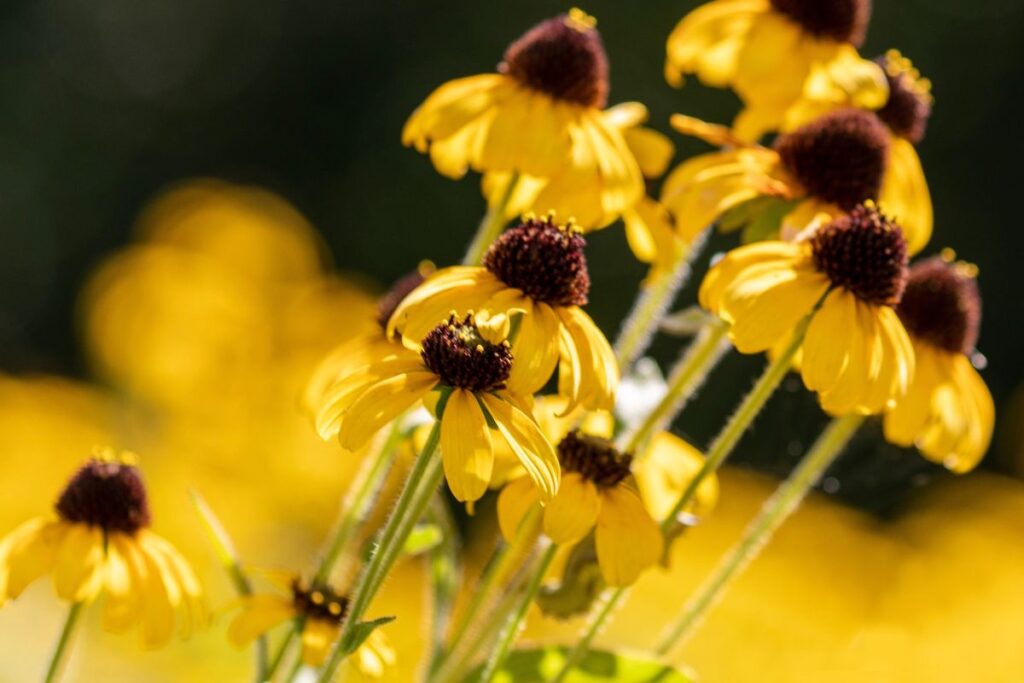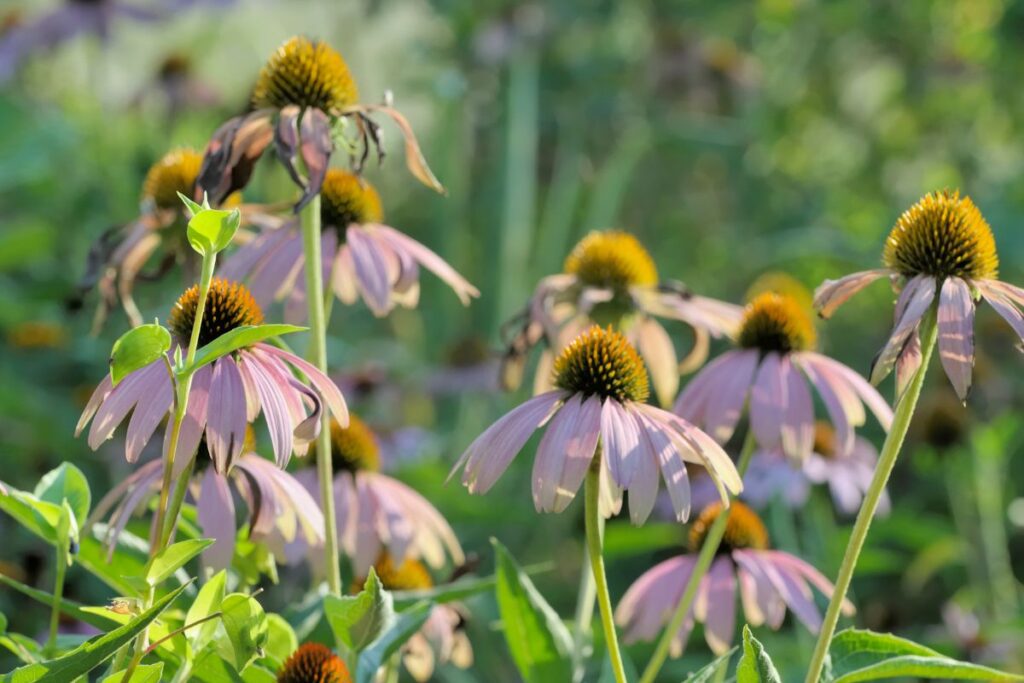Disclaimer: Our editors have used AI to create or enhance parts of this article and some images. All content has been fact-checked by our team to ensure accuracy.
Love your coneflowers?
Want them to return year after year?
Learn the best tips and tricks to ensure your perennial coneflowers come back strong each season.
Ready to keep your garden blooming?
Let’s get started!
Are Coneflowers Annuals or Perennials?

Are coneflowers annuals or perennials? The answer isn’t straightforward. Coneflowers, or echinaceas, are generally perennials, hardy in USDA zones 3 through 9. This means they can survive the winter and return each year. However, whether they come back depends on the variety.
Many coneflowers, like the popular Echinacea purpurea (often called the purple coneflower), die back in winter and regrow in the spring. These robust plants handle winter well and burst forth with new growth as temperatures warm.
Understanding Coneflower Varieties
Some coneflowers don’t survive beyond a year. These are typically flashy hybrids that, despite your best efforts, only last one season. It’s not about your gardening skills, but rather the nature of these specific varieties.
There’s also a middle ground. Certain species, such as hybrids of Echinacea paradoxa, might make it through winter if you meet their needs. These plants are prone to issues like poor growth and sensitivity to infections and weather, but if cared for properly, they’ll reward you with blooms next season.
Robust Perennial Hybrids
New perennial hybrids have been developed by plant breeders. One such example is the Echinacea Kismet Intense Orange, known for its durability and vibrant color. These hybrids are almost indestructible, making them a reliable choice for your garden.
When choosing coneflowers, research the specific variety. Knowing whether a plant is an annual or perennial can save you from disappointment and ensure lasting beauty in your garden.
Blooming Period: When and How Long?
These perennials typically bloom from May to September, giving you a vibrant display for several months. If you properly care for them, a well-established coneflower, around three years old, can reward you with up to 150 blossoms in a single season. To achieve this spectacular bloom, make sure to meet their specific care requirements and ensure they thrive in ideal conditions.
Ideal Growing Conditions for Coneflowers

Coneflowers are happiest in spots where they can soak up the sun for at least 6 hours each day. When planting coneflowers, choose an area that provides plenty of direct sunlight.
Young coneflowers need consistent watering, though once established, an inch of water weekly suffices. Plant them in soil that drains well and is enriched with compost to keep them moist and safe from waterlogging.
Avoid clay soils, as they hold too much water, and sandy soils, which don’t hold water well. Instead, opt for free-draining soil to create a perfect environment for your plants.
These low-maintenance perennials don’t need much fertilizing. Use a slow-release, balanced fertilizer in the spring, such as a triple 16 formula. Proper spacing is also crucial; about 12-18 inches between each plant ensures good airflow, helping to prevent disease and encourage healthy growth.
Coneflower Growth Habits
Coneflowers can spread due to self-sowing; when their seed pods fall, birds help disperse the seeds. Additionally, some hybrids expand their crown and send out shoots. This trait makes them an excellent choice for creating border plants that naturally fill in gaps.
The Role of Deadheading

Deadheading flowers is often done incorrectly, especially with coneflowers. There’s no need to deadhead coneflowers; they will naturally produce new blooms from May to September.
Feel free to pick some blossoms for your floral arrangements, but leave some for the birds and pollinators; they will thank you for it!
There is an exception to this. If you snip off the first buds, it can encourage additional blooming and lead to a bushier plant. This trick is particularly effective for smaller plants you purchase at nurseries.
Propagating through Division and Transplanting
If you are not dealing with a self-seeding echinacea variety, use the division method for propagation. It’s simple and has a high success rate.
Begin dividing in spring when the first leaves appear. Use a clean, sharp spade and slice the crown so each part has a set of leaves.
Your coneflowers should be around 3-4 years old for division to work best. Dividing them this way will also boost the vigor of older clumps.
Winter Care: To Cut Back or Not?
Coneflowers thrive when left alone during the winter months. These plants not only return stronger but also provide a stunning winter display with their dark seed cones.
Benefits:
- Visual Appeal: Adds to the winter garden design.
- Wildlife Attraction: Attracts birds like cardinals and goldfinches.
- Protection: In mild, wet winters, leaving the stems can prevent plant rot in wet soils.
By allowing your coneflowers to remain untouched, you’ll enhance your garden’s look and offer a food source for pollinators. Enjoy their beauty and benefits year-round!